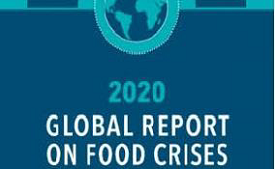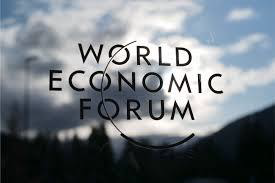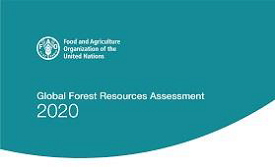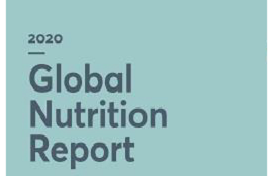
- Appointments
- Awards
- Bills & Acts
- Books & Authors
- Committees
- Deaths
- Defence
- Economic
- Environment
- Finance
- Important Days
- International
- Miscellaneous
- National
- Persons in News
- Places in News
- Regional
- Reports
- Resignations
- Science & Technology
- Sports
- Atma Nirbhar Bharat – Special
- May 2020 - Exams Resources
- Current Affairs - Quiz
- Current Affairs - Test
- Current Affairs - PDF
Current Affairs May 2020 - Reports
1 - Ramayan sets record as most-watched entertainment program globally

Ramanand Sagar's epic show Ramayan became the most-watched show in the world with 77 million impressions on April 16, according to date issued by BARC India. In the same week, DD National had garnered 2.68 billion viewership for the week.
The re-telecast of the TV show started on Doordarshan National in March soon after Prime Minister Narendra Modi announced a nationwide lockdown. Ramayan was first aired on Doordarshan in 1987 and acquired a cult status over the years.
2 - India is placed third among countries in scientific publication

As per the R&D Statistics and Indicators 2019-20 based on the national S&T survey 2018 brought out by the National Science and Technology Management Information (NSTMIS), Department of Science and Technology (DST):
During 2018, India was ranked at 3rd, 5th and 9th in scientific publication output as per the NSF, SCOPUS and SCI database respectively.
India occupies 3rd rank in terms of number of Ph. D.s awarded in Science and Engineering (S&E) after USA (39,710 in 2016) and China (34,440 in 2015).
The Gross expenditure on R&D (GERD) in the country has been consistently increasing over the years and has nearly tripled from Rs. 39,437.77 crore in 2007- 08 to Rs. 1,13,825.03 crore in 2017-18.
Indias Patent Office stands at the 7th position among the top 10 Patent Filing Offices in the world
3 - IBP survey placed India at 53rd position in budget transparency, accountability

According to Open Budget Survey conducted by International Budget Partnership (IBP), India has been placed at 53rd position among 117 nations in terms of budget transparency and accountability. India's Union Budget process scored a transparency score of 49 out of 100, which is higher than the global average of 45.
New Zealand tops the chart with a score 87. The open budget survey rates the level of transparency in budget across nations on a scale of 0-100. It is based on various normative and internationally comparable indicators.
4 - Global Report on Food Crises 2020

The Global Network Against Food Crises released the annual Global Report on Food Crises. The report indicates that at the close of 2019, 135 million people across 55 countries and territories experienced acute food insecurity. Additionally, in the 55 food-crisis countries covered by the report, 75 million children were stunted and 17 million suffered from wasting in 2019.
More than half (73 million) of the 135 million people covered by the report live in Africa; 43 million live in the Middle East and Asia; 18.5 million live in Latin America and the Caribbean.
5 - UNICEF released Lost at Home report

The United Nations Children's Fund (UNICEF) released the findings of the Lost at Home report. According to the report, over 5 million people got internally displaced in India in 2019. Nearly 33 million new displacements were recorded in 2019 worldwide, of which, around 25 million were due to natural disasters and 8.5 million as consequence of conflict and violence.
India constituted the highest number of new internal displacements in the world during the period followed by the Philippines, Bangladesh and China.
6 - CMIE reports Indias unemployment rate at 27.1%

The Centre For Monitoring Indian Economy (CMIE) has reported Indias unemployment rate at 27.1% in the week ended 3 May. This is the highest unemployment rate so far. The unemployment rate in the month of April 2020 was 23.5%, nearly 121.5 million Indians.
The unemployment rate seems to have risen because of a surge in the labour participation rate from 35.4% in the week of April 21 to 36.2% in the week ended May 3. Their addition to the labour force merely raised the unemployment rate.
7 - IAMAI reports India has more internet users in rural areas than urban

According to the Digital in India report by the Internet & Mobile Association of India (IAMAI), internet users in rural areas surpassed those in urban areas for the first time. As of November 2019, there were 227 million active internet users in rural areas which is 10% more than around 205 million in urban areas. In total, India had 504 million active internet users.
The increase in female internet users (26 million) was more than that of male internet users. It was an increase of 21% which is much higher than the 9% increase in male internet users.
8 - IEA released Global Energy Review 2020

The International Energy Agency released Global Energy Review 2020. The report highlights the global energy demand in 2020 and carbon dioxide emissions. The report was based on an analysis of electricity demand over more than 100 days, during which much of the world has entered lockdown in a bid to control the corona pandemic.
The report predicted that global energy demand would fall 6% in 2020, seven times more than during the 2008 financial crisis. Global oil demand in 2020 is projected to drop by 9%, coal demand by 8%.
9 - IMR data released by Registrar General of India

Registrar General of India released data on the national birth rate, death rate and infant mortality rate for the year 2018.
Highlights are as follows:
- National birth rate in 2018 stood at 20 and death rate at 6.2
- Infant mortality rates stood at 32.
- Bihar state topped birth rate list while Andaman and Nicobar remained at the bottom.
- Chhattisgarh has the highest death rate, while Delhi has the lowest.
- Madhya Pradesh has the worst infant mortality rate in the country while Nagaland has the best.
- IMR declined at an all-India level from 50 to 32 in the last decade.
10 - State of the Worlds Nursing Report 2020

The World Health Organization and the International Council of Nurses released the State of Worlds Nursing report.
Some of the key findings of the report are:
- There are 36.9 nurses per 10,000 people.
- There are 1.56 million nurses in India. However, only 67% nurses are professional nurses.
- Nurses comprise of 47% of medical staff in India.
- The worldwide shortage of nurses is to increase to 5.7 million nurses.
11 - India ranked at 74th position in Global Energy Transition Index

According to the World Economic Forum (WEF) annual rankings, India has improved its ranking by two places and moved to 74th position on the global Energy Transition Index (ETI). India improved on all key parameters of economic growth, energy security and environmental sustainability.
Sweden has topped the index followed by Switzerland and Finland in the top three. France (ranked 8th) and the UK (7th) are the only G20 countries in the top ten. The index benchmarks 115 economies.
12 - World Economic Situation and Prospects 2020 report of the UN

According to the World Economic Situation and Prospects as of mid-2020, UN slashed Indias projected growth rate to 1.2%. The report predicts the global economy to contact by 3.2% as the COVID-19 pandemic paralyses the world. The report has forecast India to recover slightly and clock a 5.5% growth rate in 2021. China is expected to grow at 1.7%.
All other economies in the world, including the US (-4.8%), Japan (-4.2%), European Union (-5.5%) and the United Kingdom (-5.4%) are projected to shrink this year.
13 - Investment Capacity of India in renewable sector reached 500-700 billion USD

According to a study by the Institute of Energy Economics and Financial Analysis, India has increased its potential of renewable energy investments to 500-700 billion USD. This is mainly on account of solar power.
According to the study, the ultra-mega solar parks in the country have attracted foreign capital. The Bhadla Solar Park in Rajasthan is the largest solar park in the world. It is spread over 14,000 acres. The capacity of the park is 2245 MW of power.
14 - Global Forest Resources Assessment, 2020 of the FAO

The Global Forest Resources Assessment Report, 2020 released by the Food and Agriculture Organization (FAO) presented a synoptic view of the worlds forests and the ways in which the resources have changed in the period 1990-2020.
According to the report, around 178 million hectares of forests was lost in the last 30 years. However, the rate at which the forests are being destroyed has reduced. The rate of forest loss has declined to 10 million hectares between 2015 and 2020.
15 - WHO released Global Nutrition Report, 2020

The World Health Organization released Global Nutrition Report, 2020. According to the report, India is one among the 88 countries that are to miss global nutrition targets set for the year 2025.
Malnutrition is responsible for more ill health than any other cause. 20 million babies are born of low birth weight each year. Around 9% of under-5 children in India are stunted and 20.8% are wasted. At least, 21.6% of Indian women and 17.8% of Indian men were anaemic.